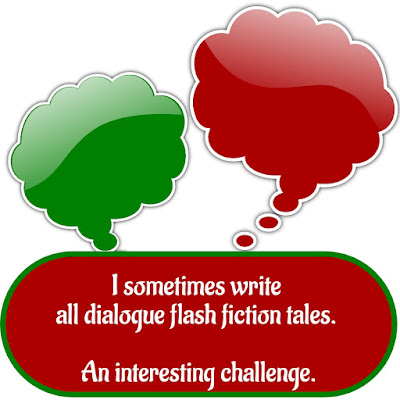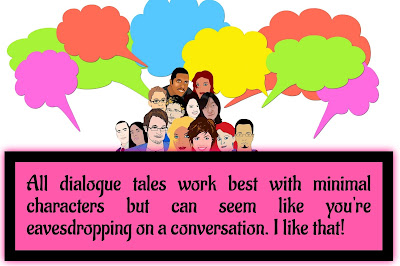Writing All Dialogue Stories by Allison Symes
Image Credit: Images created in Book Brush using Pixabay photos.
I sometimes write all dialogue flash fiction. It’s an interesting challenge. It works best kept short. I usually come in at 300 words or under for this kind of writing.
I have a soft spot for writing dialogue so this is fun to do. I have to watch myself for conversational ping-pong as I could get my characters talking and talking and talking! But for this kind of story I can do that and get away with it by keeping it to the point.
These stories are often ones where I know what the last line will be first. This is sometimes a humorous punchline or a twist ending but I then work out my story backwards to get a to a logical starting point. What led to this conversation finishing with this ending?I sometimes take part in Open Prose Mic Nights. Flash fiction works well for this as you usually have three to five minutes and I can read two or three of my pieces in that time. The all dialogue tales work well for this. People do listen for what your characters are coming out with!
And I do have fun writing all dialogue tales where my characters are quarrelling. By the end of the story there must still be a resolution so they will have talked themselves out of the argument or agreed to go their separate ways at the end of it. Either way the issue is resolved.






Comments
Great post, thanks for making me think!